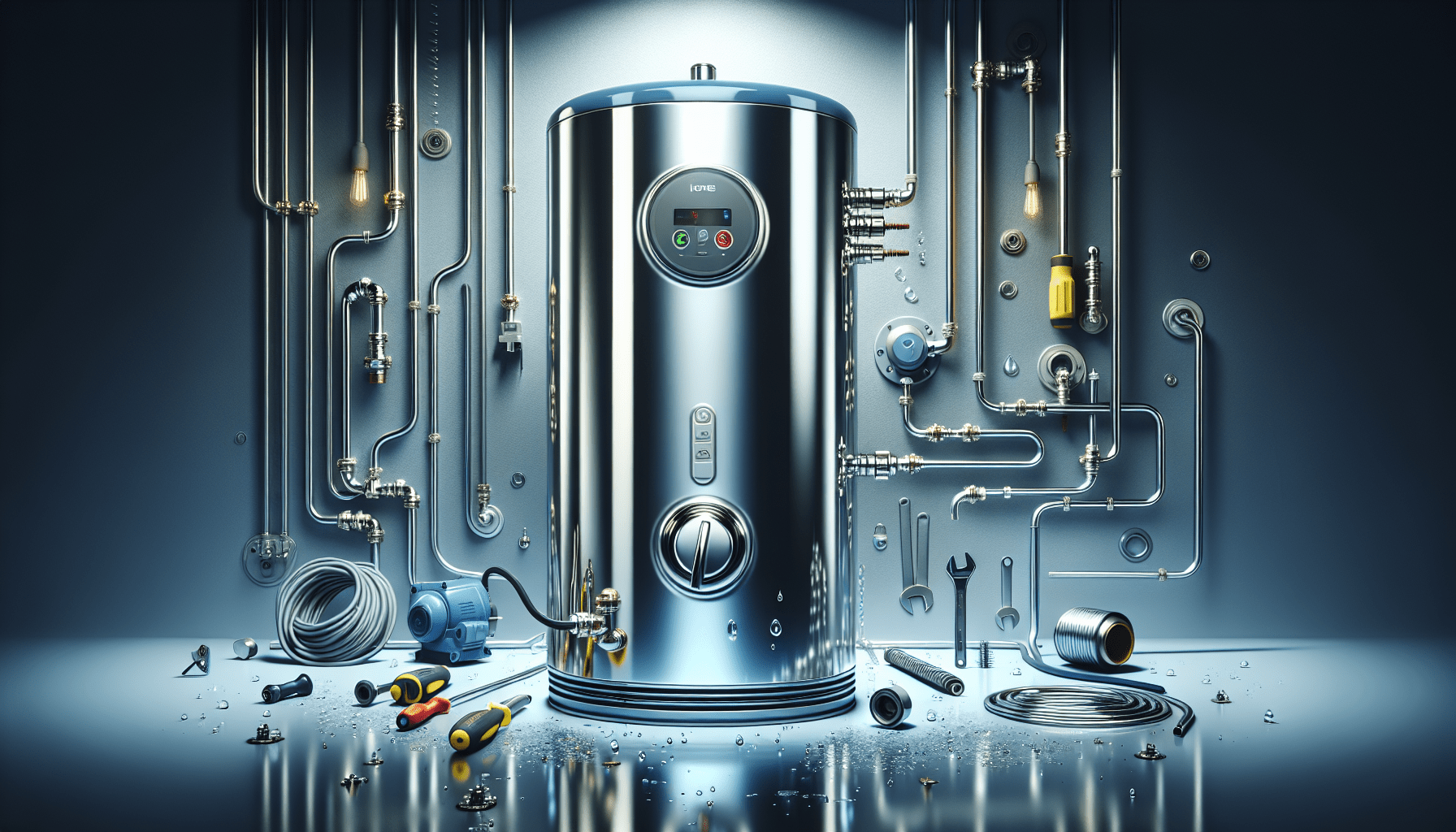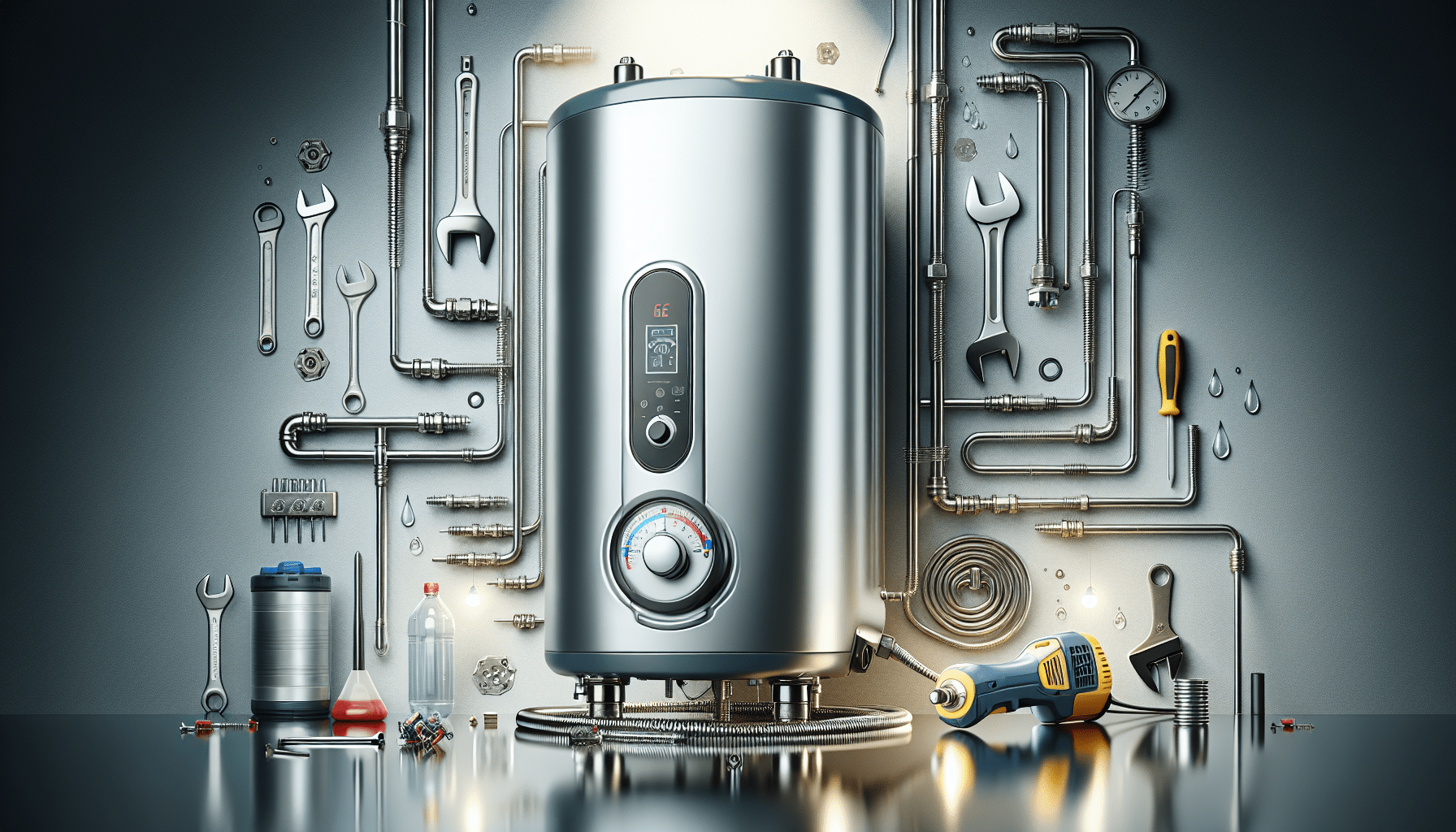Have you ever wondered how those warm showers keep coming, day in and day out, without a hitch? You might be surprised to learn that there’s quite an interesting mechanism behind the magic of electric water heaters. Understanding how these devices work can not only help you appreciate your daily comfort but also empower you to make informed decisions when it comes to maintenance or replacement.

The Basics of Electric Water Heaters
Before we get into the nuts and bolts of how your electric water heater operates, let’s cover the fundamental principles that govern its function. You might think it’s just a big metal tank, but oh, it’s so much more!
What is an Electric Water Heater?
An electric water heater is a device that heats water using electricity. Unlike its gas-powered counterparts, which rely on combustion, it uses electric coils to generate heat. Most of these heaters can store several gallons of water—often anywhere from 20 to 80 gallons.
How Does It Differ from Other Water Heaters?
You may be asking yourself why you should care about electric water heaters versus gas or solar options. Each type has its own advantages and disadvantages. Electric models tend to be easier to install and may have fewer maintenance requirements compared to gas heaters, making them a popular choice for many households.
The Anatomy of an Electric Water Heater
Understanding the components of your electric water heater is essential for grasping how it works. Once you know what’s inside, everything will make a little more sense.
The Tank
The tank is the most visible part of your electric water heater. It’s where the water is stored and heated. The insulation around the tank helps to maintain the water temperature, making your energy usage more efficient.
Electric Heating Elements
You may have noticed two metal protrusions when you look inside the tank. These are the electric heating elements. They come in two types: upper and lower. The upper element heats the water above it first, ensuring you have hot water available for your morning shower. The lower element kicks in when the water level drops, heating up the water at the bottom of the tank.
Thermostat
The thermostat controls the temperature of the water in the tank. It ensures that the water doesn’t get too hot, preventing scalding. If you’ve ever turned on the hot water and found it too scalding or lukewarm, the thermostat is likely either set incorrectly or malfunctioning.
Anode Rod
An often-overlooked component is the anode rod. It attracts corrosive elements in the water, which helps protect the tank from rusting. You may not think about it every day, but this little rod can extend the life of your water heater significantly—if it’s replaced when needed!
Pressure Relief Valve
For safety, electric water heaters have a pressure relief valve. This is designed to release excess pressure to prevent explosions, which—let’s be honest—is good news for all of us. If you ever hear a hissing noise coming from your heater, it might be doing its job, so don’t panic right away!

How Does an Electric Water Heater Work?
You’re probably eager to understand the actual heating process, so let’s break it down step-by-step.
Filling the Tank
When you turn on the hot water tap, cold water enters the tank through the cold water inlet. This is usually located at the top of the tank. The tank fills up to the specified capacity, and once the water level reaches a certain point, the heating elements kick in.
Heating the Water
As the cold water fills the tank, both electric heating elements begin to operate. The upper element heats the top portion of the tank first. Once the water at the top reaches the desired temperature—usually set between 120°F to 140°F (49°C to 60°C)—the upper thermostat will shut off that element. Next, if there’s more demand for hot water, the lower element activates and heats the remaining body of water in the tank.
Maintaining Temperature
The thermostat continuously monitors the water temperature. If it drops below the set level due to usage, the heating elements will turn back on to maintain the temperature. This ensures you have a constant supply of hot water whenever you need it.
Hot Water Usage
Once the hot water reaches your tap, it’s ready for use. The heated water will rise to the top of the tank, allowing the cooler water at the bottom to be pushed out when you need hot water. You may notice that the longer you let the hot water run, the cooler it becomes. This happens because you are depleting the hot water stored in the tank.
Energy Efficiency and Cost
Electric water heaters come in various sizes and efficiencies, so it’s essential to consider both your usage habits and budget.
Energy Consumption
It’s no secret that water heating can drive up your energy bill. However, understanding how to choose a more energy-efficient model can save you quite a bit in the long run. Look for units with high Energy Factor (EF) ratings, which indicate greater efficiency.
Comparison with Gas Heaters
When you compare electric water heaters to gas heaters, you might find that the initial costs of gas models are lower. However, electric heaters often have lower overall maintenance and operational costs, especially where natural gas isn’t readily available.
Maintenance Tips for Your Electric Water Heater
Like any appliance, your electric water heater will benefit from routine maintenance to keep it running smoothly.
Regular Checks
Check the pressure relief valve annually to ensure it’s functioning. You can do this by lifting and releasing the lever gently—water should come out, signifying that it’s working.
Flushing the Tank
Sediment can build up in the bottom of your water heater, especially if you live in a hard water area. Flushing the tank at least once a year can prevent this, extending the life of your unit.
Inspecting the Anode Rod
As mentioned earlier, the anode rod is a key player in protecting your tank. Inspect it every couple of years, and replace it if it’s corroded more than 6 inches.
Check the Thermostat
If you notice fluctuations in hot water availability, it might be wise to check the thermostat. A malfunctioning thermostat could lead not just to cold showers but also to higher energy costs.
Troubleshooting Common Issues
Over time, you might encounter some common problems with your electric water heater. Here’s how to address them.
No Hot Water
If you’ve turned on the tap and the water feels cool, first check the breakers. A tripped breaker could be the culprit. If everything looks good there, it might be a sign that the heating elements or thermostat need replacement.
Leaking Tank
A pool of water around your water heater can indicate a serious problem. Check the drain valve first; if it’s leaking, tighten it. If the tank itself is leaking, it may be time for a replacement.
Strange Noises
Hearing pop or rumbling noises may mean sediment buildup in your tank. Flushing it might solve this issue. If the noise persists, consult a professional for further evaluation.
The Future of Electric Water Heaters
Thinking about the future? The advancements in technology bring exciting options for electric water heaters that promote efficiency and sustainability.
Tankless Water Heaters
Consider tankless electric water heaters if you’re after an on-demand solution. These units heat water directly without storing it in a tank, offering hot water only when needed and saving energy in the process.
Smart Technology
With the rise of the Internet of Things (IoT), smart water heaters are now available that provide more control over temperature settings and energy usage. These models can be programmed and monitored via smartphone apps, putting you in the driver’s seat for managing your energy consumption.
Eco-Friendly Options
As more people become environmentally conscious, manufacturers are producing more eco-friendly electric water heaters using sustainable materials and energy sources. Look for Energy Star-rated appliances to be on the cutting edge of efficiency.
Conclusion
Understanding how electric water heaters work not only empowers you to troubleshoot and maintain your appliance, but it can also encourage more thoughtful energy usage. Whether you’re basking in the soothing warmth of your morning shower or grappling with a malfunctioning unit, take a moment to appreciate these unsung heroes of home comfort. By making informed choices about your electric water heater, you’ll ensure that comfort stays within reach, and you just might save a few bucks in the process.

